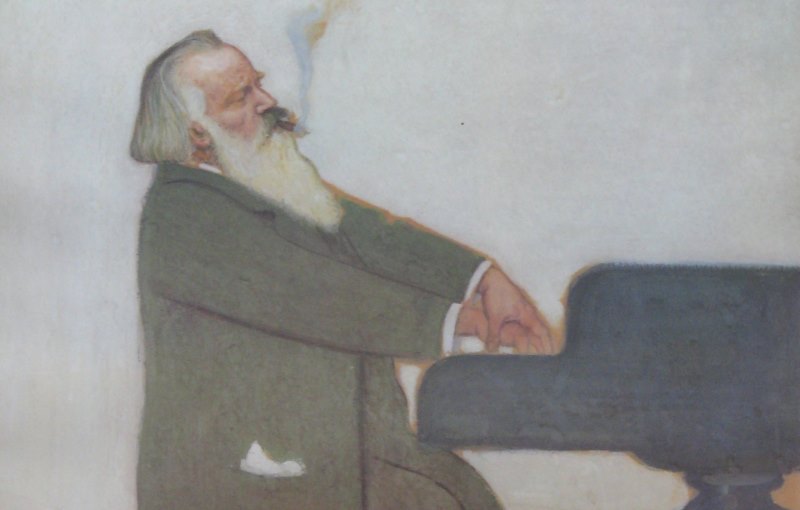Brahms composed his violin concerto in the last half 1878, close on the heels of his second symphony. He worked on it closely with the Hungarian violin virtuoso Joseph Joachim (in fact, Joachim also wrote the cadenza most often heard in contemporary performances).
While originally conceived in four movements, this concerto has three — an opening Allego non troppo, a middle movement Adagio, and the final Allegro giocoso. It is practically symphonic in scope, with alternating passages by the orchestra and soloist designed to fully explore the rich thematic material.
The first movement opens with a lengthy orchestral exposition which contains most of the thematic material used by both the soloist and orchestra — a calm rising and falling triad (faintly reminiscent of the second symphony); an intense rising chromatic passage played in unison; a mysterious and soft descending three-note pattern; and an agitated and jagged dotted-note passage setting up the first entrance of the solo violin. The violin picks up on these themes and expands them, both in fiery passagework and lush melodies. The lengthy cadenza is a masterwork by Joachim, a tour-de-force of virtuosity and melody.
The second movement Adagio begins with a hushed wind choir, featuring a notable oboe solo, which is echoed by the solo violin. After an impassioned development, the opening theme returns with a violin obbligato on top of the original wind theme. The last movement is a gypsy-like rondo, ending with the theme restated as a march.
Violin Concerto in D Major
Op. 77
Composed in 1878
By Johannes Brahms






